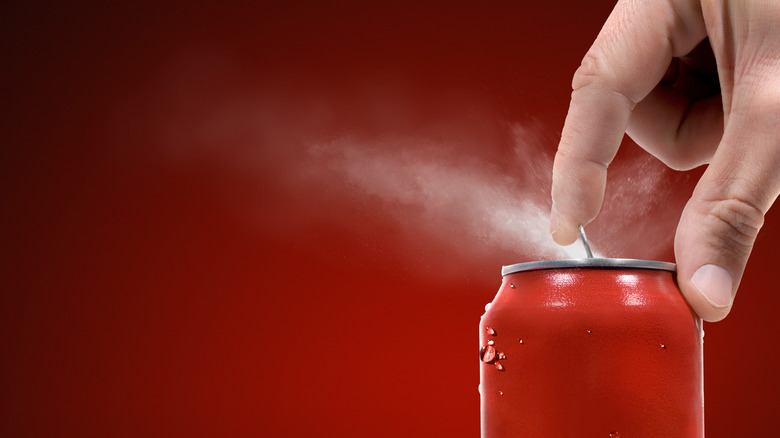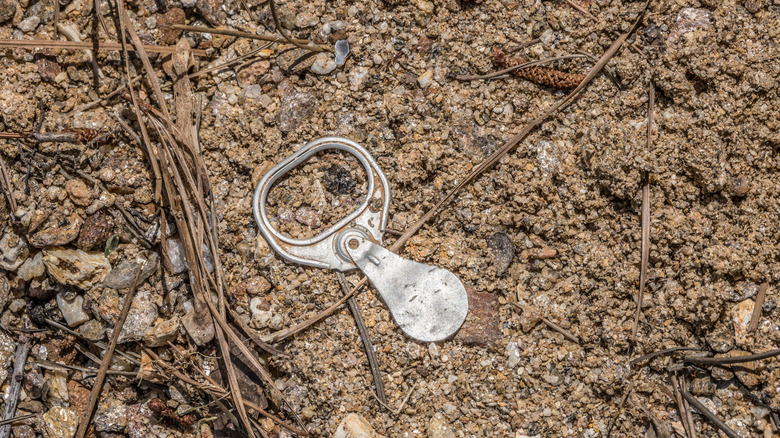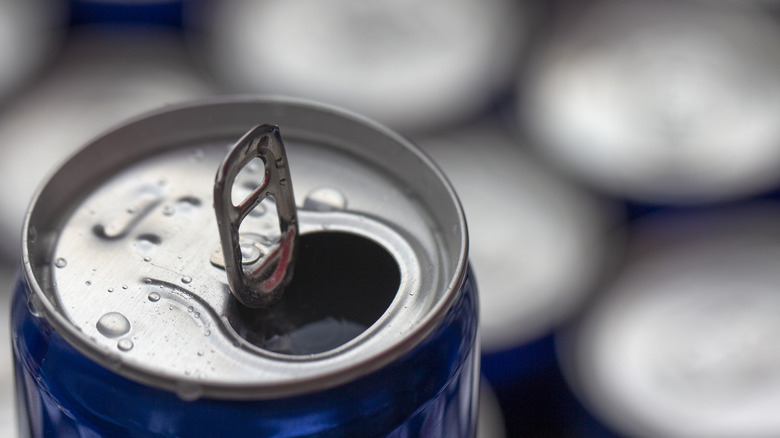Opening Your Canned Soda With A Pull Tab Used To Be A Risky Business
Though most of us think of the soda can as having a pretty straightforward design, going far back enough, this near-ubiquitous beverage item looked quite different. Carbonated beverages weren't always sold in cans, but it does seem safe to say that most readers will struggle to remember when canned beer and soda weren't readily available. By the middle of the 20th century, these aluminum cans were everywhere. They offer a cheap, practical, and convenient method of packaging, transporting, and consuming carbonated beverages. This, however, didn't stop a certain crucial component of these aluminum cans from becoming, at least somewhat, a public health hazard.
By the mid-1960s, the "pop top" had become common for canned carbonated beverages. The pop top wasn't too different from today's tab openers, except for one crucial difference. After cracking open the soda, the tab was to be pulled back further, with the triangular wedge of aluminum removed entirely and discarded. As many of us would guess, these discarded aluminum wedges were a litter nuisance. They were abundantly present on the ground of public spaces like beaches, where they often waited just under the sand to slice up the feet of summertime swimmers and frolickers.
The tabs could also be swallowed
Cutting up one's feet is painful enough. But the risk of swallowing one of these errant, sharp aluminum pieces was even more worrisome. It wasn't just pets or toddlers at risk of doing this. A common method of disposing of the removed tab was to drop the pulled tab in the can itself if a trashcan wasn't around. One peer-reviewed article in a 1976 issue of The Journal of the American Medical Association found that no fewer than seven children from 1973-1976 had been hospitalized in the United States — with one even dying — after swallowing a pop-top tab. Added risk came from aluminum being difficult to pick up on X-rays, meaning doctors could miss the tab entirely before it's too late.
Certain doctors and others in the medical community were soon raising this concern. A physician named Lee Rogers brought this up at a radiology conference in 1974. Rogers had accidentally swallowed an aluminum pop-top tab during a basketball game, and after suggesting that these tabs might be a hazard to public health, media outlets ran with it. Around 400 newspapers ran articles on the topic, essentially launching a public campaign to change the opening mechanisms on soda and beer cans. The irony is that just a decade before being deemed a public health risk, the pop top had been proposed as the solution to another problem with canned carbonated beverages.
New problems, new solutions
Much like its alcoholic carbonated cousin beer, soda was more often than not packaged in and consumed from glass bottles through the first few decades of the 20th century. Even after cans were introduced, the question of sealing and opening continued to present a problem.
For a while, beer and soda cans had a funnel-like top to which a crown-top bottle cap could be sealed. Over time, this method was replaced with the "church key" can and bottle opener used to punch a drinking hole in the top of the can, which presented a problem if you didn't have one of these openers around. Invented in 1959 by Ermal Fraze, the pop top had been promoted in the 1960s as a solution, and it was certainly a convenient one for a time. But now, with the risk of choking or otherwise injuring one's self, another solution would be needed.
Hence, the " Stay-on-Tab" is pretty much what we all know and recognize on the top of our beer and soda cans today. Developed in 1974 by Reynolds Metals engineer Daniel Cudzik, the Stay-on-Tab allows the beverage to stay airtight and, when opening, would bend the tab back into the can itself rather than pop it off. The tab was first introduced in 1975 on cans of Falls City beer and quickly became standard on carbonated beverage cans worldwide.


